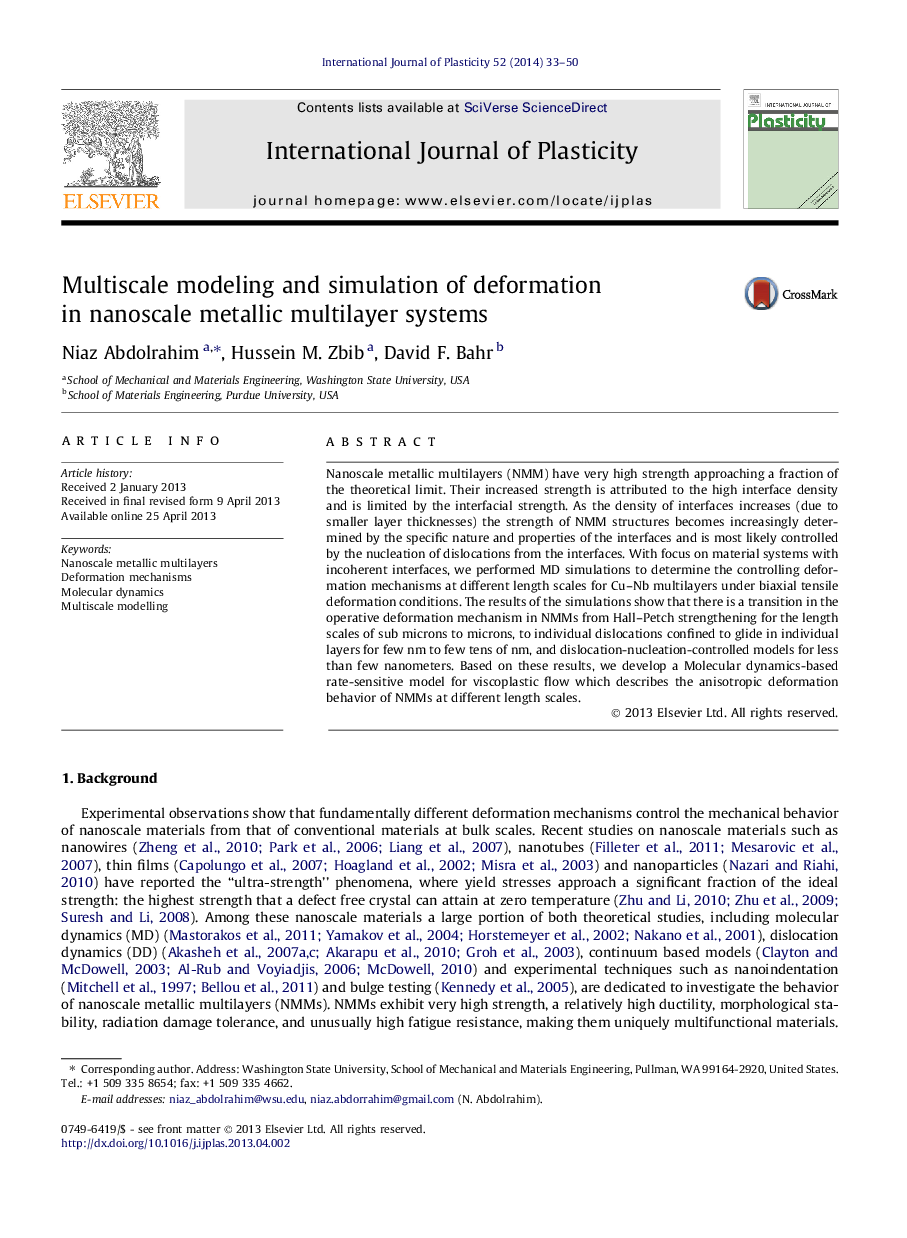| کد مقاله | کد نشریه | سال انتشار | مقاله انگلیسی | نسخه تمام متن |
|---|---|---|---|---|
| 786820 | 1465621 | 2014 | 18 صفحه PDF | دانلود رایگان |
• The deformation behavior of nanoscale metallic multilayers are studied using MD simulations.
• A unique viscoplastic continuum model is established.
• Plastic flow potential was acquired by performing MD simulations.
Nanoscale metallic multilayers (NMM) have very high strength approaching a fraction of the theoretical limit. Their increased strength is attributed to the high interface density and is limited by the interfacial strength. As the density of interfaces increases (due to smaller layer thicknesses) the strength of NMM structures becomes increasingly determined by the specific nature and properties of the interfaces and is most likely controlled by the nucleation of dislocations from the interfaces. With focus on material systems with incoherent interfaces, we performed MD simulations to determine the controlling deformation mechanisms at different length scales for Cu–Nb multilayers under biaxial tensile deformation conditions. The results of the simulations show that there is a transition in the operative deformation mechanism in NMMs from Hall–Petch strengthening for the length scales of sub microns to microns, to individual dislocations confined to glide in individual layers for few nm to few tens of nm, and dislocation-nucleation-controlled models for less than few nanometers. Based on these results, we develop a Molecular dynamics-based rate-sensitive model for viscoplastic flow which describes the anisotropic deformation behavior of NMMs at different length scales.
Journal: International Journal of Plasticity - Volume 52, January 2014, Pages 33–50
